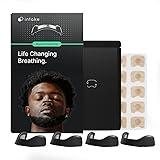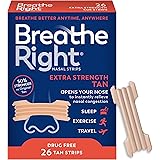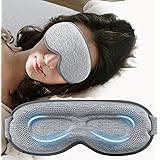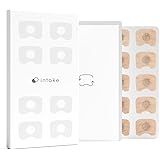Living with sleep apnea and needing to use a Continuous Positive Airway Pressure (CPAP) machine for treatment can be a significant adjustment. For many, the most challenging part isn’t the machine itself, but finding a comfortable and effective mask. Traditional CPAP masks, often featuring extensive headgear straps, can lead to a host of frustrations, from skin irritation and red marks to feelings of claustrophobia and tangled hair.
However, as you just saw in the video above, there’s an exciting development revolutionizing how people approach their sleep apnea therapy: the viral CPAP mask without headgear. This innovative design promises a whole new level of comfort and freedom, addressing many of the long-standing complaints associated with conventional masks. It’s a game-changer for those seeking a less intrusive and more comfortable solution for their sleep health.
The Common Struggle with Traditional CPAP Masks
For years, individuals relying on CPAP therapy have faced similar hurdles with their masks. Imagine if the very device meant to help you breathe easier at night caused discomfort, making it difficult to fall and stay asleep. This has been the reality for countless people.
Many traditional CPAP masks come with multiple straps that wrap around the head, often leading to pressure points, skin indentations, and even sores. Furthermore, the bulkiness of some masks can restrict movement, making it hard for side or stomach sleepers to find a comfortable position. Instead of providing restful sleep, the mask itself becomes a source of frustration, potentially leading to reduced CPAP adherence.
Why Discomfort Leads to Poor CPAP Adherence
The biggest challenge with CPAP therapy is often consistency. If a mask is uncomfortable, patients are less likely to wear it consistently throughout the night, every night. This directly impacts the effectiveness of their sleep apnea treatment.
While the machine is vital for maintaining open airways, an uncomfortable mask can turn a life-saving therapy into a nightly battle. Imagine waking up with red marks on your face, or having your hair tangled in straps every morning. These small irritations can quickly accumulate, making it tempting to abandon therapy altogether. This is precisely why innovations in comfortable CPAP mask designs are so critical.
Introducing the Revolutionary CPAP Mask Without Headgear
The concept of a no headgear CPAP mask is transforming the experience for many users. Unlike their conventional counterparts, these masks utilize innovative attachment methods, offering a far less intrusive profile. They minimize facial contact and eliminate the need for cumbersome straps that encircle your head.
Instead of traditional headgear, these advanced masks might use gentle adhesives, lightweight frames that rest on the nose, or even designs that integrate directly with the CPAP tubing. The goal is simple: secure the mask effectively without the extensive facial coverage and pressure points that cause so much discomfort. It’s about maximizing comfort while maintaining a reliable seal for effective therapy.
Key Benefits of a Headgear-Free CPAP Mask Design
Switching to a CPAP mask without headgear offers a myriad of advantages that can significantly improve your sleep apnea therapy experience:
- Enhanced Comfort: Without restrictive straps, there’s no pressure on your forehead, cheeks, or the back of your head. This drastically reduces the likelihood of red marks, skin irritation, and overall discomfort.
- Improved Freedom of Movement: Side and stomach sleepers often struggle with traditional masks shifting or digging into their faces. Minimalist designs allow for greater movement without compromising the seal.
- Reduced Claustrophobia: The open-face design of many headgear-free masks can alleviate feelings of claustrophobia, making therapy more tolerable for those who feel enclosed by traditional masks.
- Cosmetic Benefits: Say goodbye to tangled hair and unsightly strap marks on your face each morning. These masks offer a more discreet and less noticeable presence.
- Better Adherence: When a mask is comfortable and unobtrusive, users are far more likely to wear it consistently, leading to better sleep apnea treatment outcomes and improved sleep quality.
Who Can Benefit Most from a No Headgear CPAP Mask?
While the benefits are broad, certain individuals might find the no headgear CPAP mask particularly advantageous. If you’re new to CPAP therapy and worried about mask discomfort, this could be an ideal starting point. It helps alleviate some of the initial anxieties people have about wearing a mask nightly.
Similarly, if you’re a long-time CPAP user who has struggled with finding a comfortable CPAP mask, experiencing issues like skin irritation, leaks due to shifting, or claustrophobia, exploring these innovative options could be a breakthrough. Imagine finally getting a full night’s sleep without the mask itself being a source of stress.
Considering the Switch: Important Factors
If you’re considering trying a CPAP mask without headgear, there are a few important points to keep in mind. First and foremost, consult with your sleep specialist or doctor. They can provide guidance on whether this type of mask is suitable for your specific needs and prescription.
It’s also crucial to understand that even headgear-free masks still require a proper fit to maintain an effective seal. You might need to try a few different options to find the one that works best for your facial structure. Additionally, if the mask uses adhesives, consider any skin sensitivities you might have and ensure you understand the proper cleaning and maintenance protocols.
Beyond the Mask: Holistic Sleep Apnea Management
While the right mask, especially a comfortable CPAP mask like a headgear-free option, can dramatically improve your therapy experience, it’s just one piece of the puzzle. Effective sleep apnea treatment also involves a holistic approach to your sleep health. Regularly following up with your doctor, maintaining a healthy lifestyle, and practicing good sleep hygiene are all vital components.
For example, ensuring your bedroom is dark, quiet, and cool can significantly enhance the quality of your sleep. Avoiding heavy meals or caffeine close to bedtime also plays a crucial role. Ultimately, combining innovative solutions like the CPAP mask without headgear with comprehensive lifestyle management can lead to the best possible outcomes, helping you breathe easier and sleep better.








